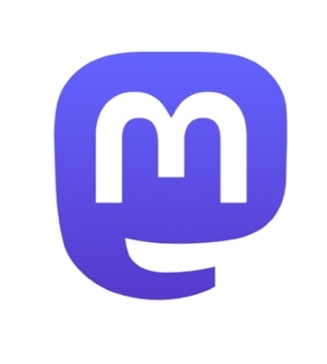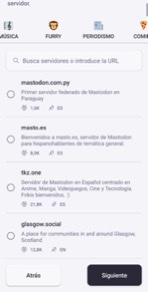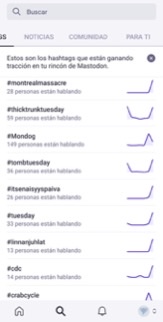
MASTODON, THE SUBSTITUTE FOR TWITTER ?
Since the purchase of Twitter by Elon Musk on October 27, the situation of the social network is anything but stable. Once he carried out his desired acquisition, Elon Musk soon proclaimed himself CEO of it, and carried out a series of radical measures that have triggered the volatility of the entire structure that makes up the social network, among which are the dismissal of the former core management and half of the total staff in his first 15 days in charge of Twitter, and whose effects have raised fears of a collapse in its operation at any time.
Faced with this uncertainty, many have decided to anticipate, and take refuge in a very similar social network, although with important differences, but… What is this alternative social network that seems to be “the new twitter”?
The answer is Mastodon.

Are Mastodon and Twitter the same?
It is a microblogging social network launched on the market on October 5, 2016, created by the Russian-German software developer Eugen “Gragron” Rochko, and developed by Richard Stallman’s GNU Social project, which he developed in this same Quitter project. , another social network with which you can interact through Mastodon.
At first glance, Mastodon is very similar to Twitter, since, in addition to being microblogging, Mastodon’s interface and technical functions are very similar. However, the first big difference lies in the decentralization of Mastodon, which, instead of controlling all content from a single server, there are numerous servers, called communities or instances, to which users can voluntarily belong and publish their messages, which will be read only by users who belong to the same community, unless they are federated communities, in which users can publish and read messages from the general community without any type of restriction.
The second difference is its more liberal nature in relation to the rules of the social network. Each community has its own regulations, which do not have to coincide with the rest of the communities. Even so, there are minimum standards applicable to all servers, which are published in the main Mastodon federated community.
The third and last big difference derives from the freedom of rules in the Mastodon communities, since they can establish a payment to be part of them. However, the most common is that the vast majority of communities are free.

How does Mastodon work?
As in Twitter we publish messages in “tweets”, in Mastodon they are published in “toots”, which have a much larger character limit, allowing the publication of “toots” of up to 500 characters, compared to the 280 that Twitter allows.
Regarding the various options available when “tooting”, these are the same as those found when “tweeting”. Regarding writing, the way to mention other users is also through the use of the @ symbol, hastags (#) can be used, and a warning can be put in the “toot” itself by pressing the characters CW, so that, as in Twitter, the content of the “toot” is first hidden with a warning and a button to show the content.
However, the display and organization of the “toots” timeline is different from that of tweets. Firstly, when it comes to “tooting”, you can choose if you want the “toot” to be seen by all the communities, this would be a federated “toot”, that users belonging to your community see it, that only your followers, or, that only the users that you have mentioned in the “toot” see it. Regarding the organization of the timeline of the “toots”, unlike the only timeline of Twitter, in Mastodon there are three timelines; the main one, where the “toots” of the followed users appear, the local time one, where the “toots” of the users who belong to your same community appear, and the federated one, where all the Mastodon federated “toots” appear, that is, they may belong to users from other communities that you do not follow.
Finally, the profiles on both social networks are also very similar. As in Twitter, in Mastodon you can view the profile picture, the username, his “bio”, his followers and followers, and his history of “toots”, both his own and those shared, as well as those that contain images or videos. The only difference is in the presence, or not, of the option to see which community the user belongs to.



Conclusion. Will Mastodon unseat Twitter?
Despite their common features, the decentralized operation of Mastodon in different communities, the display of its three temporary timelines, and the restriction of content according to whether or not you belong to certain communities, make Mastodon a more structured social network, and, to some extent, more personalized according to the concerns of the users.
In terms of the number of users, Mastodon is still a long way behind Twitter, with around 655,000 users currently. However, during the first week of November, when Elon Musk began carrying out his controversial measures, more than 200,000 new users were registered on Mastodon.
Therefore, to this day, it cannot be affirmed or denied that Mastodon will unseat Twitter from its throne in the future. However, it is undeniable that this uncertainty will be resolved to a large extent depending on how Twitter resolves its internal crisis in the coming months.

